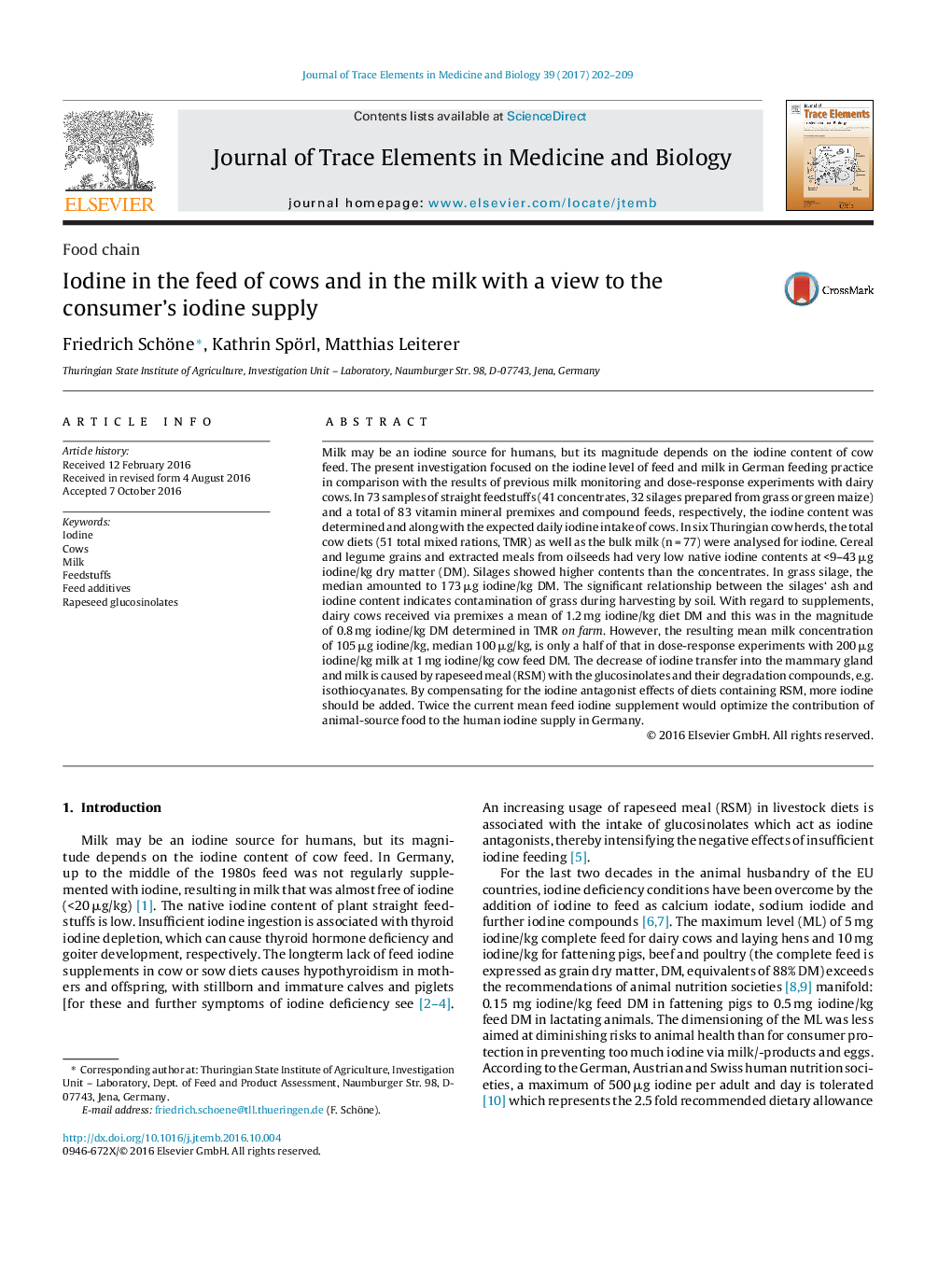| Article ID | Journal | Published Year | Pages | File Type |
|---|---|---|---|---|
| 7639017 | Journal of Trace Elements in Medicine and Biology | 2017 | 8 Pages |
Abstract
Milk may be an iodine source for humans, but its magnitude depends on the iodine content of cow feed. The present investigation focused on the iodine level of feed and milk in German feeding practice in comparison with the results of previous milk monitoring and dose-response experiments with dairy cows. In 73 samples of straight feedstuffs (41 concentrates, 32 silages prepared from grass or green maize) and a total of 83 vitamin mineral premixes and compound feeds, respectively, the iodine content was determined and along with the expected daily iodine intake of cows. In six Thuringian cow herds, the total cow diets (51 total mixed rations, TMR) as well as the bulk milk (n = 77) were analysed for iodine. Cereal and legume grains and extracted meals from oilseeds had very low native iodine contents at <9-43 μg iodine/kg dry matter (DM). Silages showed higher contents than the concentrates. In grass silage, the median amounted to 173 μg iodine/kg DM. The significant relationship between the silages' ash and iodine content indicates contamination of grass during harvesting by soil. With regard to supplements, dairy cows received via premixes a mean of 1.2 mg iodine/kg diet DM and this was in the magnitude of 0.8 mg iodine/kg DM determined in TMR on farm. However, the resulting mean milk concentration of 105 μg iodine/kg, median 100 μg/kg, is only a half of that in dose-response experiments with 200 μg iodine/kg milk at 1 mg iodine/kg cow feed DM. The decrease of iodine transfer into the mammary gland and milk is caused by rapeseed meal (RSM) with the glucosinolates and their degradation compounds, e.g. isothiocyanates. By compensating for the iodine antagonist effects of diets containing RSM, more iodine should be added. Twice the current mean feed iodine supplement would optimize the contribution of animal-source food to the human iodine supply in Germany.
Related Topics
Physical Sciences and Engineering
Chemistry
Analytical Chemistry
Authors
Friedrich Schöne, Kathrin Spörl, Matthias Leiterer,
